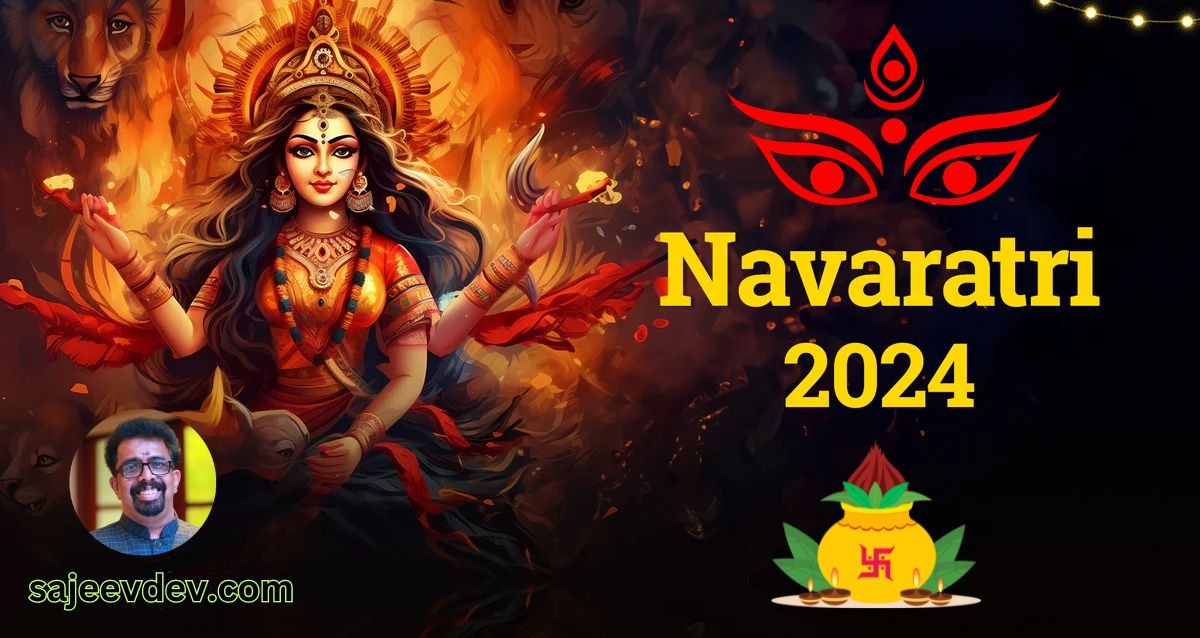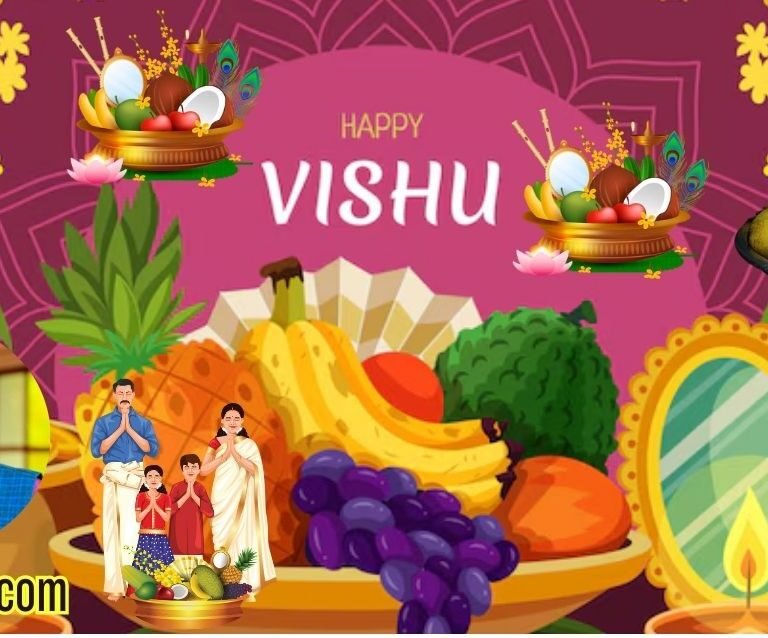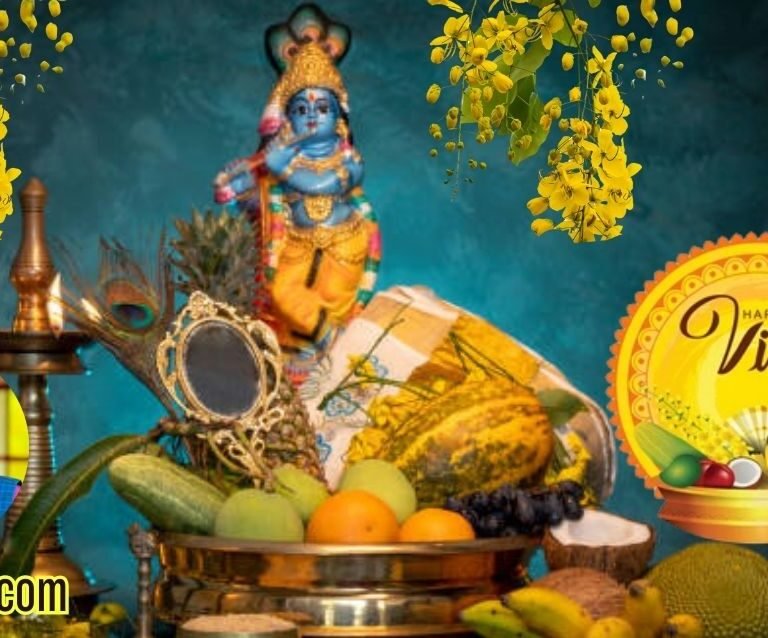Navaratri is a significant and vibrant annual Hindu festival that honors Goddess Durga, embodying the divine feminine energy known as Adi Parashakti.
Navaratri is a significant and vibrant annual Hindu festival that honors Goddess Durga, embodying the divine feminine energy known as Adi Parashakti. The term “Navaratri” translates to “nine nights,” symbolizing a nine-night celebration dedicated to the worship of different forms of Durga. This festival typically occurs in the lunar month of Ashwin, which corresponds to September or October in the Gregorian calendar, making it a pivotal cultural event in the Hindu calendar.
The observance of Navaratri reflects profound devotion and is characterized by various rituals, prayers, and festivities. Each of the nine nights is devoted to a specific aspect of Goddess Durga, allowing devotees, including both Shaivites—followers of Lord Shiva—and Shaktas—those who particularly revere the Goddess—to express their spiritual reverence in unique ways. This aspect of devotion fosters a sense of unity among participants as they engage collectively in worship practices that vary from region to region across India.
During Navaratri, festivities include gathering for prayer, conducting elaborate poojas, and participating in traditional dance forms such as Garba and Dandiya Raas. These cultural expressions not only enhance the spiritual atmosphere of the festival but also strengthen community bonds. Furthermore, the observance of fasting and the recitation of sacred texts further underline the intent of purification and devotion.
The significance of Navaratri extends beyond mere celebration; it serves as a reminder of the triumph of good over evil, as exemplified by Goddess Durga’s victory over the buffalo demon Mahishasura. This narrative encapsulates the essence of the festival, making it a revered occasion for both spiritual growth and community cohesion.
Goddess Durga: The Central Figure of Navaratri
Goddess Durga, an essential deity in Hindu mythology, plays a pivotal role during the Navaratri festival, which celebrates her various forms and manifestations. She symbolizes power, virtue, and the triumph of good over evil. As the physical embodiment of Shakti, or divine feminine energy, Durga epitomizes strength, resilience, and the protective qualities women possess. Represented in various art forms, she typically features multiple arms, each holding a different weapon, symbolizing her ability to combat diverse evils and challenges.
Durga is often depicted riding a lion or a tiger, which underscores her fierce nature and dominance over the animal kingdom. This imagery not only highlights her role as a warrior but also represents her control over primal instincts, reflecting the harmony between ferocity and compassion within femininity. The intricate iconography of Goddess Durga includes features that signify her multifaceted character: her third eye represents wisdom, her fierce countenance defends against negativity, and her four, eight, or even ten arms signify her omnipotence and ability to act in various capacities simultaneously.
A crucial aspect of Durga’s narrative is her connection to Goddess Parvati, as she is considered a manifestation of Parvati when she assumes the role of a warrior to save the universe from evil forces, particularly the buffalo demon Mahishasura. This narrative emphasizes the strength derived from femininity, showcasing how Durga’s ferocity comes from her compassionate and nurturing essence as Parvati. Through her tales, Durga inspires millions to recognize and cultivate their inherent strength and power. As devotees engage in the rituals associated with Navaratri, they honor not only the goddess’s strength and valor but also her importance in embodying womanhood, spirituality, and the relentless quest for justice.
The Seasonal Significance of Navaratri
Navaratri, an ancient festival representing the divine feminine energy, is observed in various seasonal forms throughout the year. While there are four theoretical seasonal Navaratris—Chaitra, Ashadha, Sharada, and Magh, it is Sharada Navaratri that attracts significant attention. This festival typically occurs in the lunar month of Ashwin, corresponding to the Gregorian months of September to October and is celebrated predominantly in India. Its timing is strategic as it follows the monsoon season, coinciding with crucial agricultural cycles.
The Sharada Navaratri is particularly meaningful as it heralds the transition from the intense heat of summer to the cooler autumn months. This shift is not merely climatic; it is also symbolic of prosperity and abundance following the rains, which are vital for crop growth. After the monsoon, the fields are lush, and farmers witness the fruits of their labor, making it an appropriate time to pay homage to Goddess Durga—who symbolizes strength and nurturing. This seasonal alignment emphasizes the agricultural roots of the festival, as the fertility of the earth is closely linked to the reverence for the divine feminine.
In addition to its agricultural implications, Sharada Navaratri serves as a time for spiritual rejuvenation and community bonding. Numerous rituals and cultural events take place, showcasing local traditions and practices. The festival is marked by nine nights of worship, devotion, and dance, creating a vibrant atmosphere that encourages communal participation. The energy during this period reflects a collective gratitude for the harvest and a plea for continued blessings for future prosperity.
Thus, the seasonal significance of Navaratri extends beyond mere celebration; it acts as a reminder of the harmony between nature’s cycles and human existence. By synchronizing agricultural rhythms with spiritual practices, Sharada Navaratri reinforces a deeper connection to the earth and the divine.
Gupta Navaratri: The Lesser-Known Observances
While the prominent Navaratri celebrations occur during the months of Chaitra and Ashwin, there exist two lesser-known Gupta Navaratris, which hold significant importance in various traditions. The Shukla Paksha Pratipada of both the Magha and Ashadha months marks these special observances. Unlike their more famous counterparts, Gupta Navaratris are often shrouded in mystique and are celebrated with varying degrees of fervor across different regions of India.
The Magha Gupta Navaratri is generally observed in the month of Magha, typically falling between January and February. This period is characterized by the worship of the divine feminine, particularly focusing on Goddess Durga in her various forms. Devotees engage in rituals that may include fasting, reciting specific mantras, and participating in localized spiritual practices. The observances during this time are believed to purify the soul and strengthen one’s connection to the divine energy of the universe.
In contrast, the Ashadha Gupta Navaratri occurs during the Ashadha month, around June to July. This phase is often less popular among the wider populace, yet it holds profound significance for those who observe it. It is believed that during these days, spiritual energies are heightened, rendering it an auspicious time for self-reflection and personal growth. The rituals may vary from community to community; however, the thematic essence remains rooted in honoring Goddess Durga, seeking her blessings for health, prosperity, and wisdom.
Both of these Gupta Navaratris showcase the remarkable diversity in the worship of Goddess Durga, illustrating how different cultural practices can exist within a singular tradition. Emphasizing these lesser-known observances allows a deeper appreciation for the rich tapestry of spirituality and devotion that underlies the larger framework of Navaratri celebrations. Through these rituals, devotees connect not only with the goddess but also with their inner selves, encouraging a holistic approach to spiritual and community life.
Rituals and Celebrations During Navaratri
Navaratri, a festival dedicated to honoring Goddess Durga, encompasses a series of vibrant rituals and celebrations that vary across India, reflecting the diverse cultural practices associated with this auspicious period. One of the most prominent aspects of Navaratri is the practice of fasting, observed by many devotees as a form of penance and devotion. This fasting can take various forms, from complete abstention from food to following specific dietary restrictions, with individuals consuming fruits and certain grains. The fast symbolizes purification, both spiritually and physically, as devotees prepare to receive the blessings of the divine feminine.
Prayers play an integral role in the celebrations of Navaratri. Daily rituals known as “pujas” are conducted in homes and temples, involving offerings, chanting of holy mantras, and recitation of sacred texts. Devotees engage in these practices with the intent of invoking the blessings of Goddess Durga, seeking strength, wisdom, and protection. The nine nights of Navaratri are dedicated to different avatars of the goddess, each representing unique qualities. As such, daily prayers often highlight the attributes of the specific form being honored on that particular night.
The cultural expressions during Navaratri are as diverse as the regional practices of the festival. In West Bengal, for instance, the festival culminates in the extravagant Durga Puja, where elaborate idols of the goddess are worshipped with much fanfare, music, and dance. Conversely, in Gujarat, Garba and Dandiya Raas are traditional folk dances that become the centerpiece of celebrations, drawing communities together in joyful participation. These cultural celebrations foster a sense of unity and shared spirituality among participants. Overall, the rituals and festivities of Navaratri embody a deep reverence for Goddess Durga while celebrating the rich tapestry of Indian culture.
Navaratri and Its Cultural Variations
Navaratri, a vibrant festival celebrated in various forms across India, is rich with cultural diversity reflective of the distinct traditions found in each Indian state. While the core essence of the festival remains centered around the worship of Goddess Durga, regional customs and practices contribute to a unique tapestry of celebrations that embody the spirit of the festival. In states like Gujarat, the nine nights are marked by energetic garba and dandiya dances, where devotees, dressed in colorful attire, gather to offer prayers and dance in rhythmic harmony. Music plays a pivotal role in these festivities, serving as an essential medium to express devotion and cultural pride.
In contrast, the celebrations in West Bengal showcase elaborate ceremonies and artistic representations of the goddess through intricately crafted idols. Here, Durga Puja, a significant aspect of Navaratri, includes grand processions and immersive cultural performances, emphasizing local narratives and mythologies associated with the goddess. The devotion is accompanied by traditional music, captivating dramas, and culinary delights that highlight the cultural fabric of Bengal.
Moving south, states like Tamil Nadu observe Navaratri with the display of golu, an arrangement of dolls and figurines that re-enacts various mythological episodes. The week-long festivities include special prayers, music performances, and the invitation to neighbors to partake in the celebrations, fostering community bonds. In Karnataka, the festival’s significance merges with regional practices, including the singing of devotional songs and the enjoyment of traditional delicacies.
Each state also places unique emphasis on local deities, which may represent different aspects of the divine feminine. This practice not only enriches the understanding of Durga’s multifaceted nature but also elevates the cultural significance of Navaratri across different regions of India. As a result, the festival flourishes as a multifarious celebration, illustrating the national unity in diversity, all while paying homage to Goddess Durga.
Spiritual Significance of Navaratri
Navaratri, a nine-night festival, holds profound spiritual significance for millions of devotees around the world. Each of these nights is dedicated to honoring different forms of Goddess Durga, symbolizing the intrinsic qualities of strength, courage, and resilience. Beyond its celebratory aspects, Navaratri serves as a period of profound personal transformation and introspection, allowing individuals to engage in purification of the mind, body, and spirit. This festival invites believers to align themselves with divine energies, facilitating a journey towards self-realization and inner peace.
The underlying philosophy of Navaratri emphasizes the importance of devotion (bhakti) and the role it plays in spiritual awakening. During this sacred time, devotees often practice rigorous sadhana (spiritual discipline), involving meditation and prayer, which help to cultivate a greater connection with the divine. Through these practices, one can experience an elevation of consciousness, enabling personal growth and development. The worship practices vary from region to region but universally aim at fostering a sense of unity and devotion among practitioners.
Additionally, Navaratri encourages individuals to embark on a journey of self-reflection. Participants are urged to let go of past negativities and embrace a more virtuous lifestyle. This transition is often symbolized by the rituals performed, including fasting, performing special poojas, and singing devotional songs. These actions not only purify the spirit but also create an atmosphere of reverence and gratitude towards the divine presence. The nine nights serve as an opportunity to introspect and reconnect with spiritual roots, enriching one’s personal journey and devotion to Goddess Durga.
Navaratri in Contemporary Society
Navaratri, a significant festival dedicated to the worship of Goddess Durga, traditionally spans nine nights of reverence and celebration. In contemporary society, this festival has experienced various adaptations, shaped by globalization, technological advancements, and evolving lifestyles. These forces have introduced new dimensions to the way Navaratri is experienced and celebrated across the globe.
The globalization of culture has made Navaratri accessible to a wider audience. As people migrate for work and study, they bring their cultural celebrations with them, leading to Navaratri being celebrated in diverse communities, even in non-traditional regions. Larger cities, in particular, have embraced these festivities, hosting grand celebrations that attract individuals from various backgrounds. This amalgamation of cultures enriches the Navaratri experience, fostering a sense of unity and shared gratitude towards the divine feminine.
Technology also plays a crucial role in modernizing the celebration of Navaratri. Social media platforms are utilized extensively to spread awareness, share cultural practices, and engage communities. Live streaming of ceremonies, virtual dance competitions, and online workshops not only preserve but also enhance accessibility to the festival. This trend facilitates participation among those who may not be able to attend physical events due to geographical constraints or health concerns.
Despite these contemporary adaptations, many communities strive to maintain the essence of Navaratri. Traditional customs, such as fasting, Garba dances, and the setting up of elaborate altars, remain integral to the celebration. Local groups often work collaboratively to uphold these practices while integrating modern elements, ensuring that the festival continues to resonate with younger generations. The melding of tradition with contemporary influences encapsulates the spirit of Navaratri, allowing it to evolve while still honoring the rich heritage associated with Goddess Durga.
Navaratri stands as a vibrant and significant festival in the cultural landscape of India, celebrated with immense vigor and devotion
Navaratri stands as a vibrant and significant festival in the cultural landscape of India, celebrated with immense vigor and devotion. At the heart of this celebration is the honoring of Goddess Durga, a symbol of strength and purity. As communities come together to commemorate these nine nights, Navaratri becomes an embodiment of faith, unity, and spirituality.
The festival serves not only as a time for ritual worship but also as a vital period for families to strengthen their bonds. Engaging in traditional practices, such as dancing the Garba and sharing meals, fosters a sense of togetherness that transcends generations. These familial connections are enriched by the rich tapestry of stories and teachings that surround the divine feminine, empowering individuals to navigate life’s challenges with resilience and hope.
Additionally, Navaratri promotes community spirit, with neighborhoods often uniting to organize celebrations that reflect cultural heritage. Such gatherings remind participants of their shared beliefs and values, reinforcing communal harmony. The processions, music, and vibrant displays of devotion create an atmosphere of joy and collective enthusiasm, inviting everyone to partake in the celebration, regardless of their background.
Moreover, by engaging in the traditions of Navaratri—whether through performing rituals, participating in community events, or simply reflecting on the spiritual significance—individuals are encouraged to embrace the deeper meanings embedded within this auspicious festival. As the nine nights culminate in victory and renewal, they signify an opportunity for personal growth and rejuvenation as well.
In conclusion, the significance of Navaratri extends beyond mere celebration; it is a rich and profound journey that allows devotees to honor their faith, strengthen their family ties, and nurture their community spirit. Embracing this festival invites everyone to explore its essence and engage meaningfully with its traditions, ensuring the spirit of Navaratri continues to thrive through generations.









